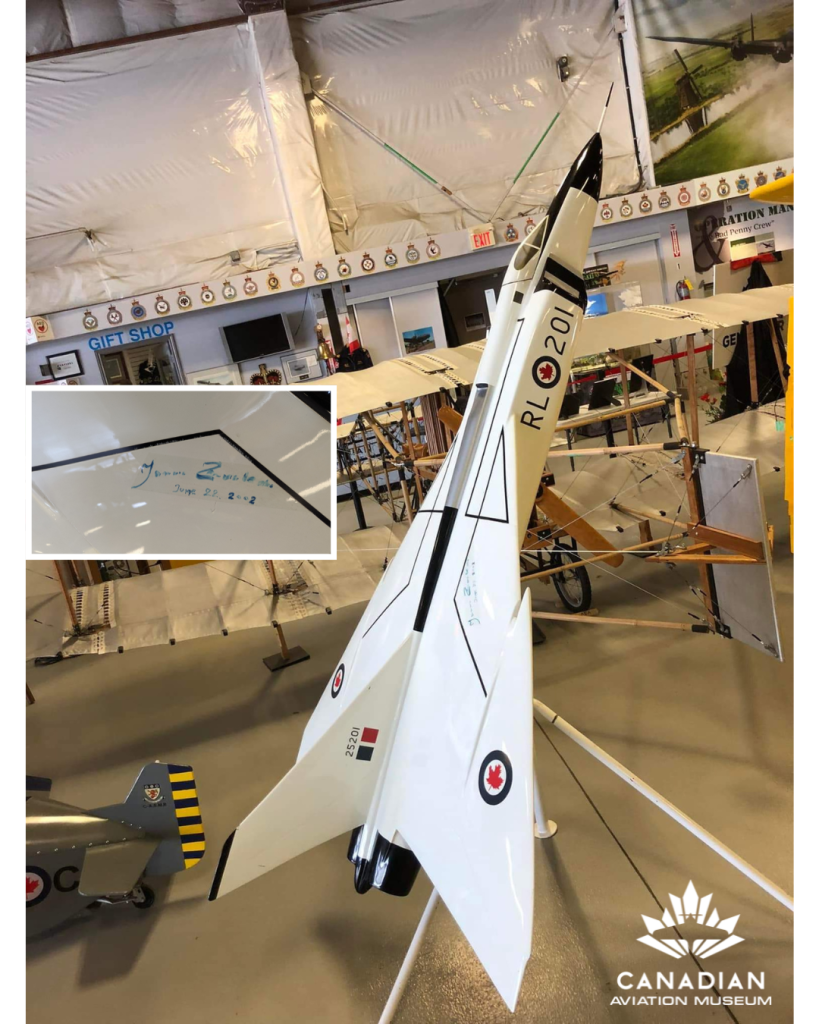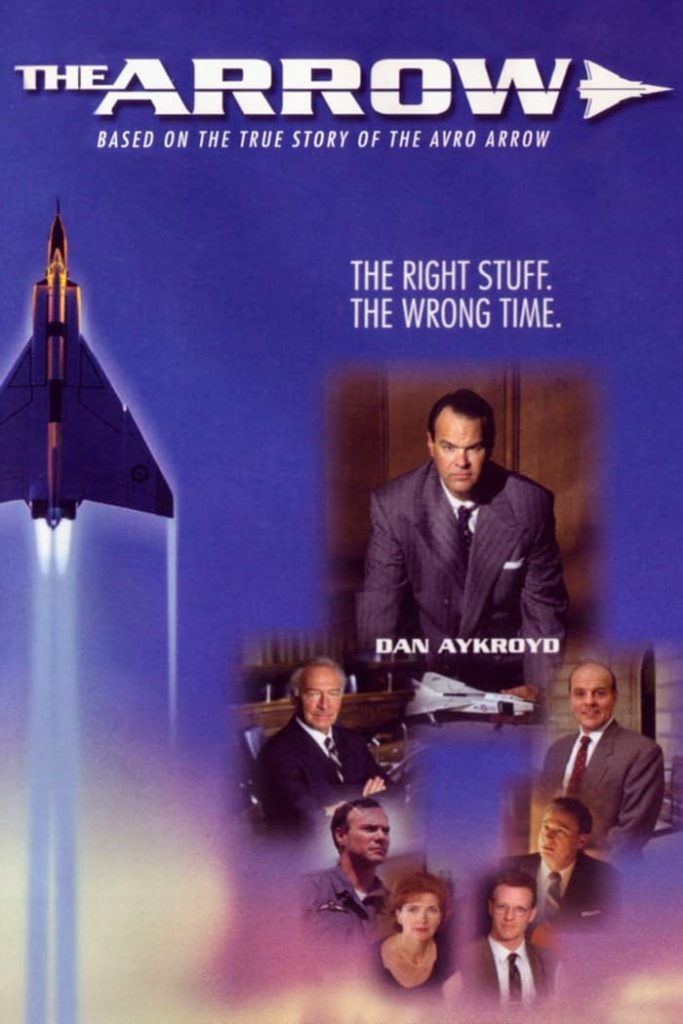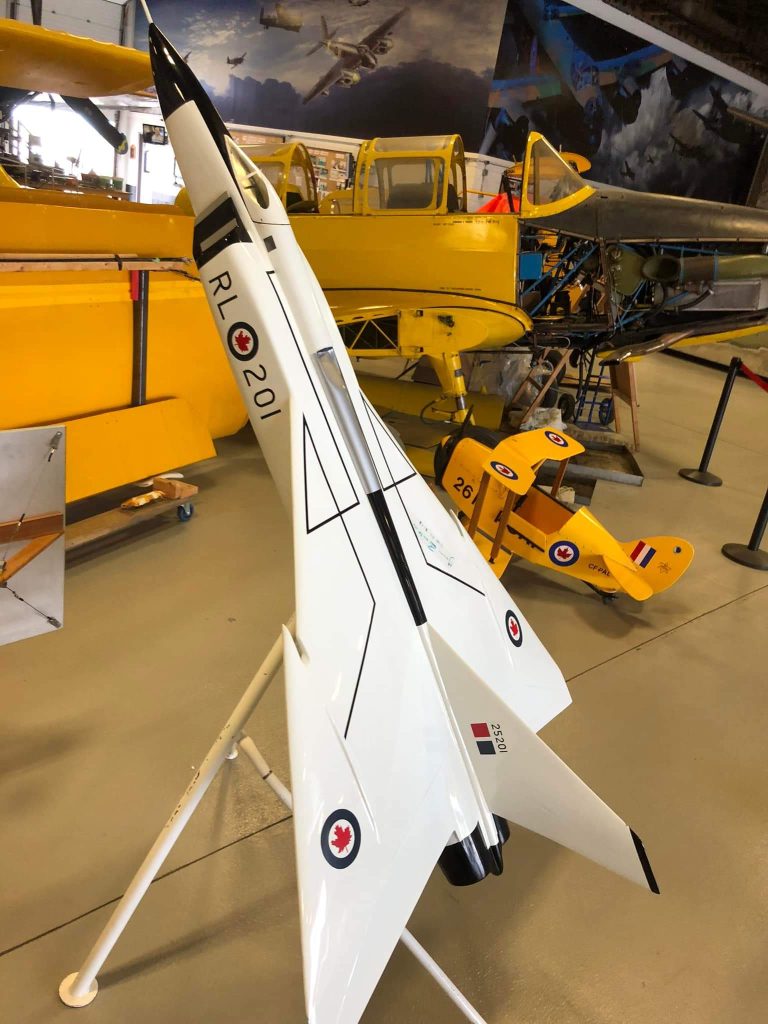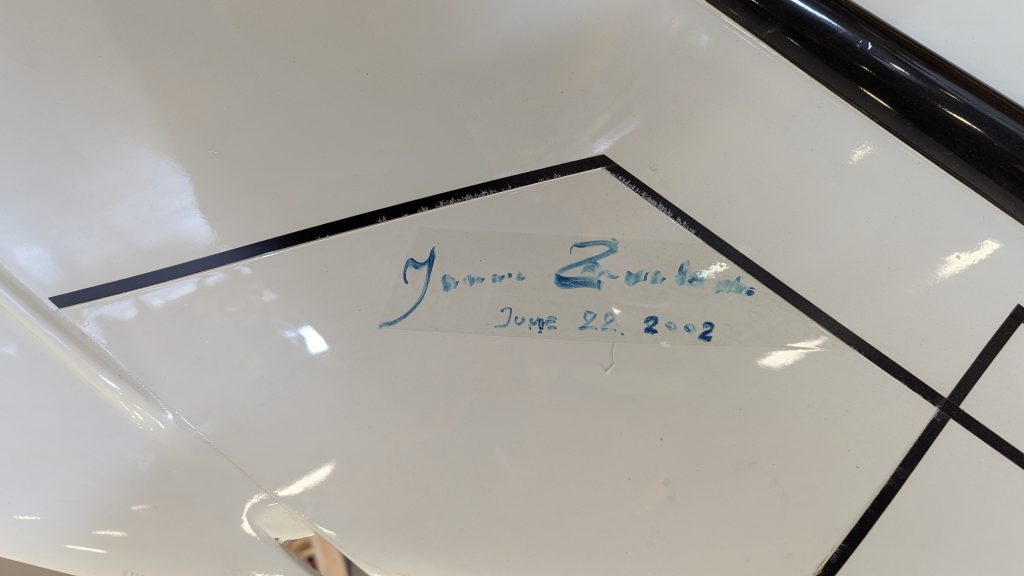AVRO CANADA CF-105 ARROW
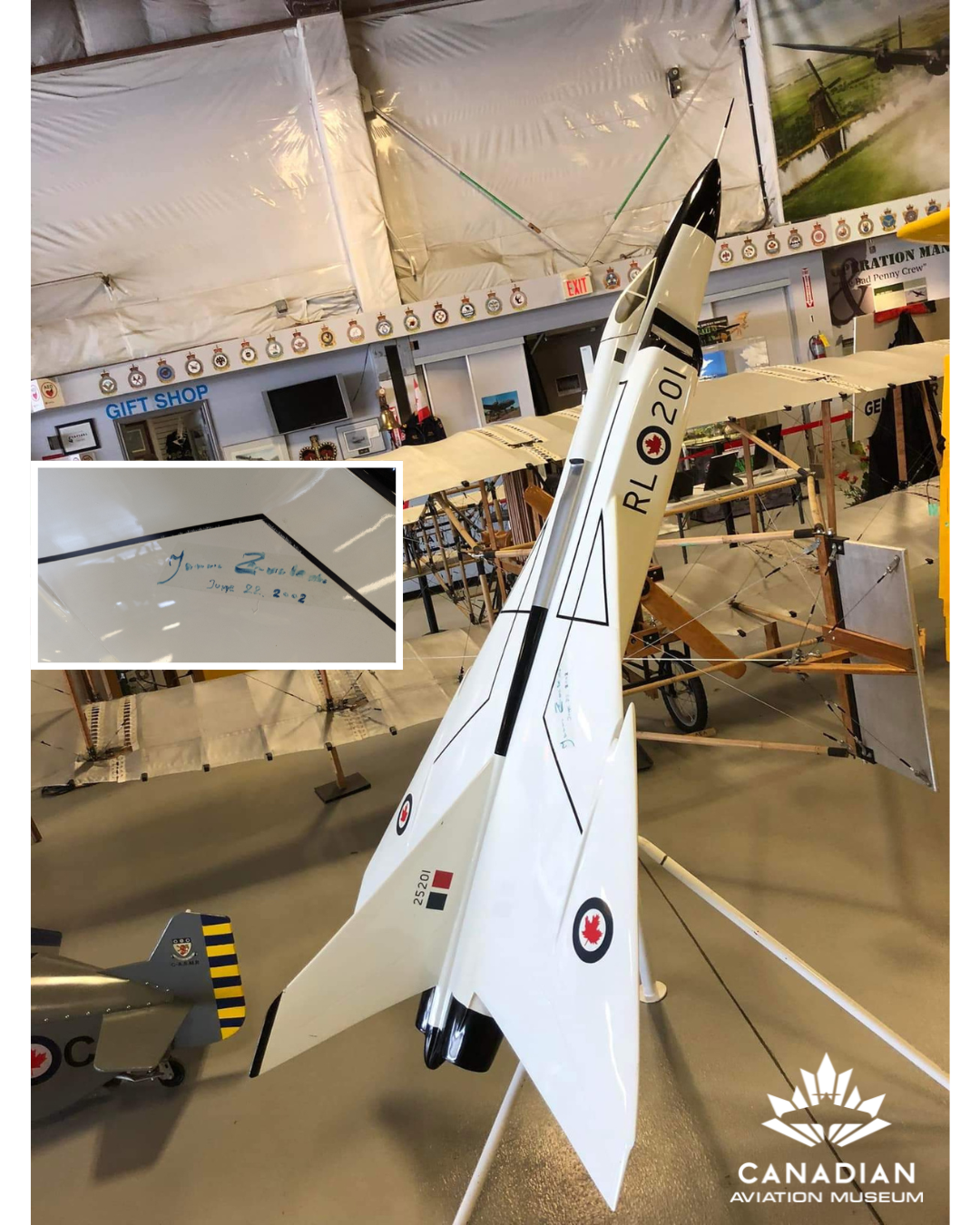
Aircraft Details
Aircraft Specifications
Length: 77 ft 9 in (23.70 m)
Wingspan: 50 ft (15 m)
Height: 21 ft 2 in (6.45 m)
Empty Weight: 49,040 lb (22,244 kg)
Gross Weight: 56,920 lb (25,818 kg)
Crew: 2
Speed: 1,136 knots (1,307 mph, 2,104 km/h)
@ 50,000 ft (15,000 m)
Mach: Mach1.98 Demonstrated
Mach: Mach 2+ Potential
Range: 261 nm (300 mi, 483 km) (Combat)
Service Ceiling: 53,000 ft (16,000 m).
Aircraft Description
Here’s a bullet-point history of the Avro Arrow:
- Early 1950s: Origins and Threat Assessment
- Following the Korean War and rising Cold War tensions, the Royal Canadian Air Force (RCAF) sought a new, advanced all-weather jet interceptor to counter the perceived threat of Soviet long-range bombers attacking North America over the Arctic.
- A.V. Roe Canada Limited (Avro Canada) was commissioned for the project, building on their experience with Canada’s first all-weather jet interceptor, the CF-100 Canuck.
- 1953: Design Studies Begin
- Research and design for the CF-105 (later named “Arrow”) supersonic interceptor commenced. The design aimed for exceptionally high performance.
- 1954-1955: Development and Production Go-Ahead
- Formal production and testing began.
- The project incorporated innovative technologies, including a fly-by-wire control system and a computerized control system.
- Extensive testing was undertaken, including wind tunnel tests and launches of 1/8 scale models over Lake Ontario.
- October 4, 1957: Roll-out of the First Arrow (RL-201)
- The first Avro Arrow prototype, RL-201, was publicly unveiled to great fanfare in Malton, Ontario, on the same day the Soviet Union launched Sputnik 1. It was hailed as a symbol of Canadian ingenuity.
- March 25, 1958: First Test Flight
- RL-201, piloted by Avro’s Chief Developmental Test Pilot Janusz “Zura” Zurakowski, completed its successful maiden flight.
- The Arrow quickly demonstrated excellent handling and performance, reaching speeds just under Mach 2 in level flight.
- 1958-Early 1959: Continued Testing and Cost Escalation
- Four more Mark I Arrows (RL-202, RL-203, RL-204, RL-205) were completed and joined the flight testing program, powered by Pratt & Whitney J75 engines.
- A Mark II Arrow, RL-206, was nearing completion and intended to be fitted with the more powerful Orenda Iroquois engine, expected to break world flight speed and altitude records.
- Despite its technical successes, the project faced significant cost overruns.
- February 20, 1959: “Black Friday” – Cancellation
- Prime Minister John Diefenbaker’s Progressive Conservative government abruptly cancelled the Avro Arrow and the Iroquois engine programs.
- The primary stated reasons were the escalating costs (around $470 million total development) and a perceived shift in the Cold War threat from manned bombers to intercontinental ballistic missiles (ICBMs), making an interceptor like the Arrow less relevant.
- The decision sparked widespread outrage and led to the immediate layoff of over 29,000 workers, a significant blow to Canada’s aerospace industry.
- Post-Cancellation: Destruction and Legacy
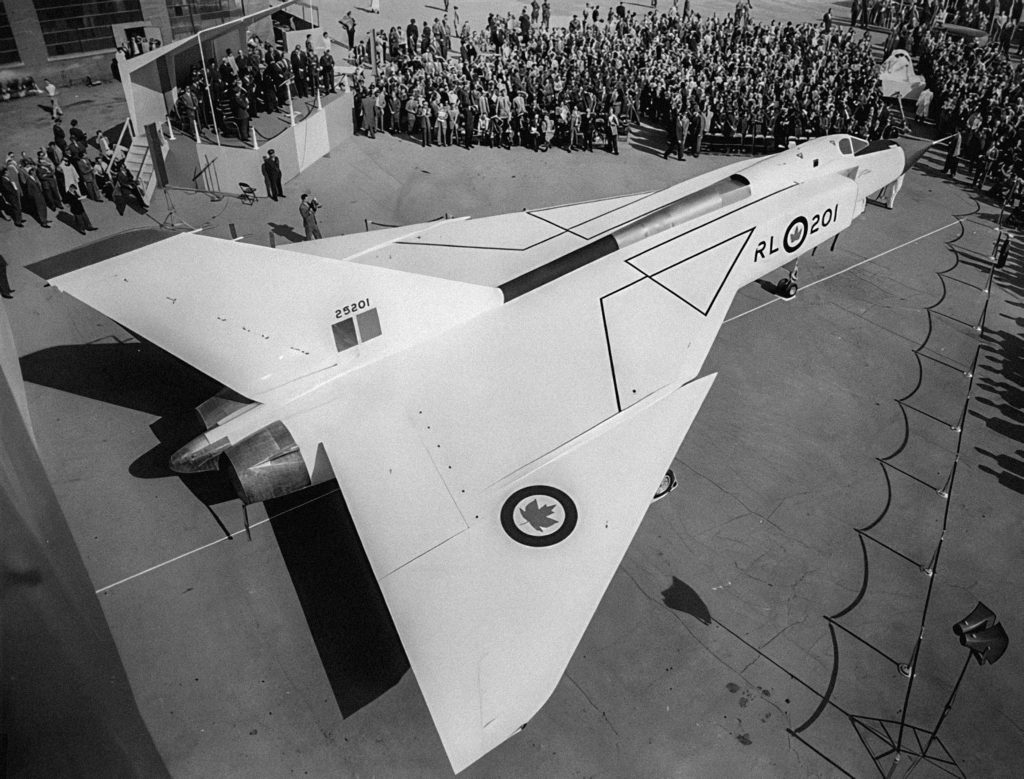
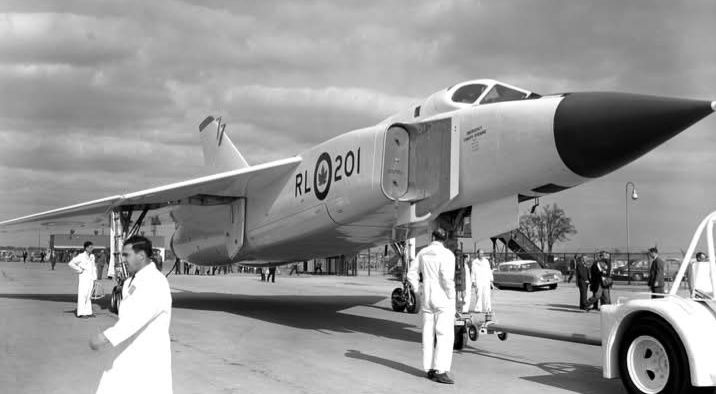
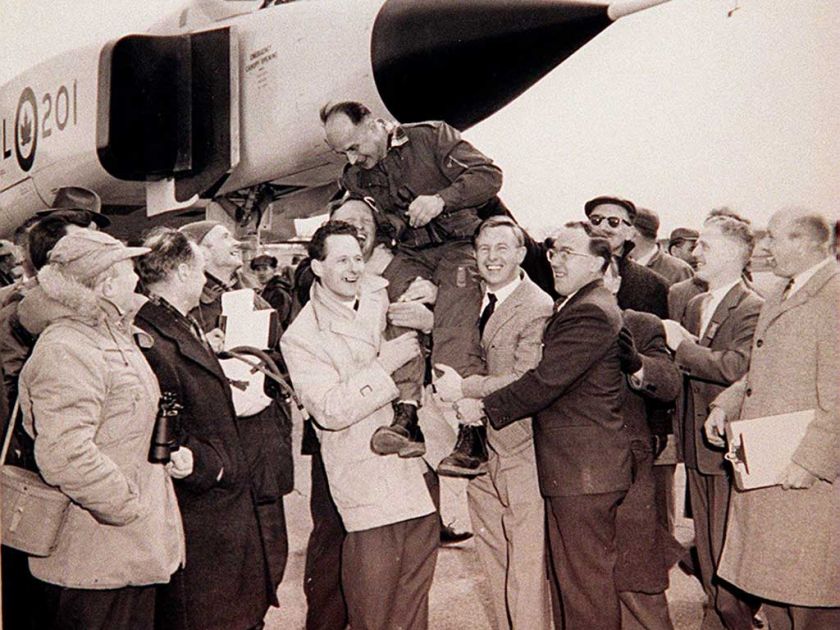
Our Display Model at the Museum
- In 1997, the CBC (Canadian Broadcasting Corporation) produced a mini-series about the CF-105 aircraft titled ‘The Arrow’ starring Dan Akroyd.
- The model you see before you was one of the original filming models used in the production of this film and was generously donated by a member of our museum who wishes to remain anonymous.
- This model on display is personally signed by famed Avro Arrow Test Pilot Jan Zurakowski.
